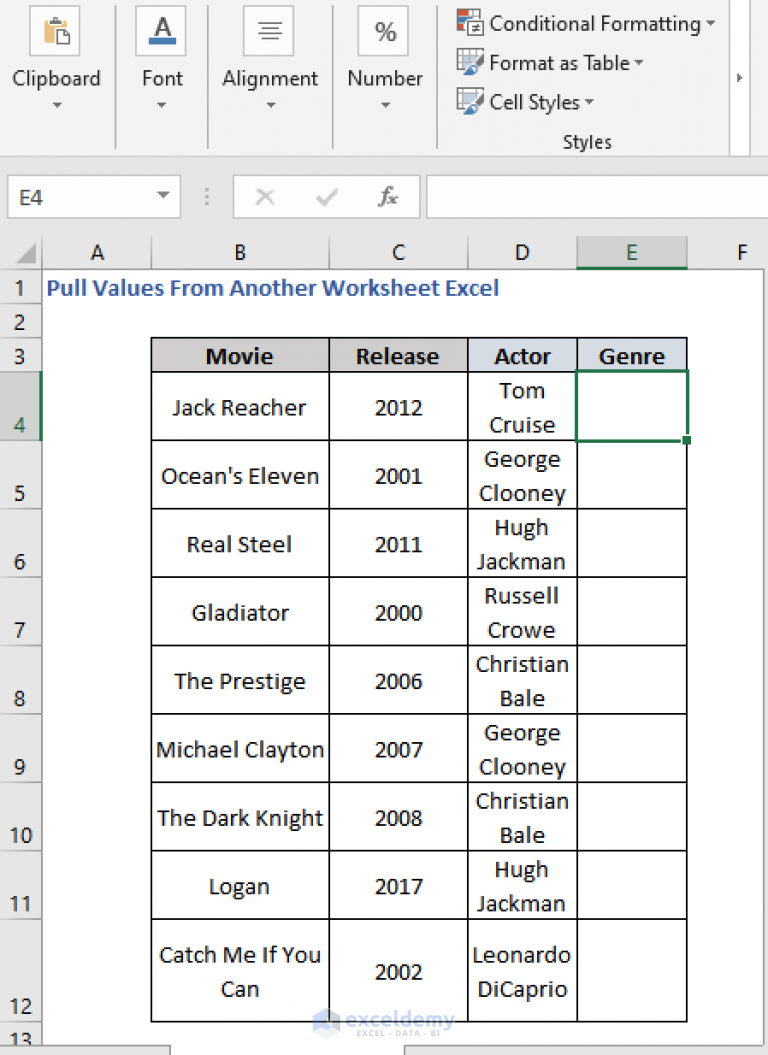3 Simple Ways to Pull Excel Data from Another Sheet

Introduction

Handling large datasets in Microsoft Excel often requires pulling data from multiple sheets. Knowing how to effectively extract information across sheets can streamline your workflow, enhance productivity, and simplify your data management tasks. In this guide, we’ll explore three straightforward techniques for pulling Excel data from another sheet, ensuring a seamless data management experience.
1. Using Formulas

Excel’s formula functions are powerful tools for referencing cells or ranges from another worksheet. Here are two formulas you might use:
=SheetName!CellReference- Direct cell reference.=VLOOKUP(lookup_value, SheetName!A1:B10, column_index, [range_lookup])- Lookup value in another sheet.
Direct Cell Reference

If you want to pull a single value or a range of values from another sheet:
=Sheet2!A1
This formula will copy the content from cell A1 of Sheet2 into the cell where you enter the formula.
🧠 Note: Ensure the sheet name is correct; Excel is case-sensitive with sheet names.
VLOOKUP

VLOOKUP searches for a value in the first column of a table array and returns a value in the same row from another column:
=VLOOKUP(A2, Sheet2!A1:B10, 2, FALSE)
This formula searches for the value in cell A2 on the current sheet within the first column of Sheet2's range A1:B10. If found, it returns the value in the second column of the same row. The FALSE argument means an exact match is required.
2. Using Index Match

Unlike VLOOKUP, Index Match is more flexible since you can look up values both vertically and horizontally.
- INDEX: Returns the value of a cell in a table based on row and column number.
- MATCH: Searches for a specified value and returns its relative position in an array.
=INDEX(Sheet2!B2:B100, MATCH(A1, Sheet2!A2:A100, 0))
This formula returns the value from column B in Sheet2 where the value from cell A1 in the current sheet matches a value in column A of Sheet2. The match type of 0 ensures an exact match.
🚀 Note: Index Match is often preferred over VLOOKUP for its ability to handle lookup from left to right and its speed advantage in larger datasets.
3. Using Power Query

Power Query (or “Get & Transform Data”) is a tool within Excel that provides an easy way to combine data from different sheets or even different workbooks. Here’s how you can use Power Query:
- Navigate to the Data tab, then click on Get Data > From File > From Workbook to select the source file.
- Choose the sheets you want to import and use the Merge Queries option to combine data from different sheets based on a common column or value.
- After merging, you can load the data into a new worksheet or append it to the existing data.
| Power Query Feature | Use Case |
|---|---|
| Merge Queries | Combine data from different sheets based on matching columns. |
| Append Queries | Add rows from one table to another. |
| Data Transformation | Clean, transform, and shape data from multiple sources. |

🛠️ Note: Power Query can handle large datasets and automates the data import and transformation process, making it ideal for repetitive tasks or complex data merging operations.
Final Thoughts

Mastering these techniques will significantly boost your efficiency with Excel, whether you’re dealing with small datasets or managing a plethora of information across multiple sheets. The ability to pull data seamlessly allows for comprehensive analysis, quick reporting, and effective data consolidation. By integrating formulas, functions like Index Match, and tools like Power Query, you’re well-equipped to handle any data linking challenge that comes your way.
How do I pull multiple columns from another sheet?

+
Use formulas like =Sheet2!A1:D10 to pull a range of cells or use Power Query to merge columns based on common keys.
Can I update the original data automatically?

+
Yes, if you use dynamic references or Power Query with refreshable connections, changes in the source data will update in your destination.
What if the sheets are in different workbooks?

+
Power Query can connect to multiple workbooks, allowing you to combine and pull data from different files.



